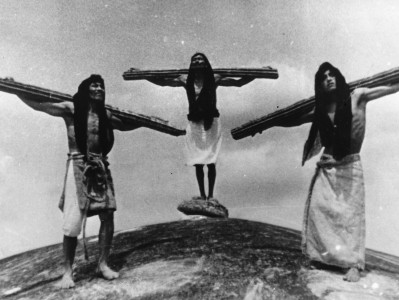
¡Qué Viva Mexico!
With Félix Balderas, Sara García, Martín Hernández.
US/USSR/Mexico, 1931, 35mm, black & white, 88 min.
Russian with English subtitles.
In Los Angeles in 1930, after his attempts to make a film in Hollywood had come to naught, Eisenstein found in author Upton Sinclair a patron for a proposed project in Mexico. The film was meant to present a historical pageant of Mexico in several episodes, from the pre-Colombian era to the aftermath of the 1910 Revolution. Shooting progressed off and on for most of 1931, but the production was pre-empted by Stalin’s demand that Eisenstein return to Mexico and by Sinclair’s withdrawal of funding. Decades later, after Eisenstein’s death, his frequent collaborator Gregori Alexandrov used the existing footage and Eisenstein’s scenario to assemble an approximation of the film, albeit without the proposed climactic section depiction of the 1910 Revolution, which was never shot. The result provides a fascinating glimpse at what might have been Eisenstein’s greatest work, a remarkable collage of fiction, documentary and ethnography replete with riveting imagery that presents Mexico itself as a montage of the archaic and the modern.
PRECEDED BY
-
Bezhin Meadow (Bezhin Lug)
Directed by Sergei Eisenstein.
With Viktor Kartashov, Nikolai Khmelyov, Pyotr Arzhanov.
USSR, 1937, 35mm, black & white, 31 min.
Bezhin Meadow seems to have been cursed almost from its inception, and the film’s fate serves as a fitting allegory for the difficulties Eisenstein faced upon his return to the Soviet Union in 1932 after four years abroad. Although its title comes from a Turgenev story, the film is based on the 1932 death of young Pavlik Morozov after informing on his father to the authorities. Although the facts of the case remain murky, the official version held that Morozov was murdered by his family, and Stalin’s regime instantly turned Morozov into a martyr, killed by reactionaries for his ideological fervor. Early versions of the film ran afoul of the authorities precisely as a result of the use of religious imagery and the charge, now seemingly inevitably attached to Eisenstein’s work, of “formalism.” All that remains of the film today is a fragmentary reconstruction set aside for reference during editing, presented as a series of still images.










